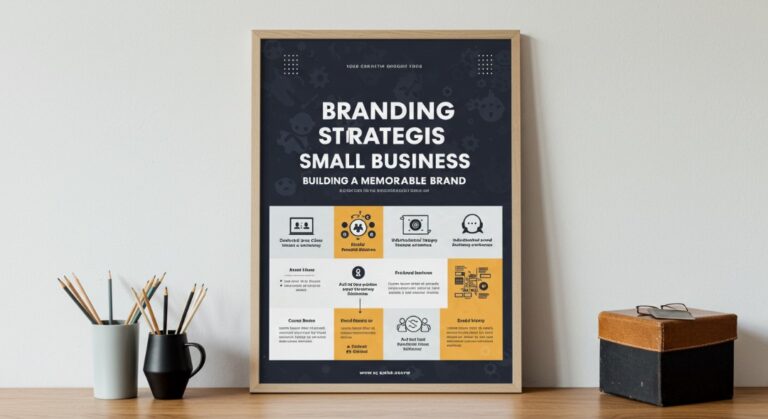A well-designed website is crucial for capturing and retaining user attention. User experience (UX) and user interface (UI) design play pivotal roles in ensuring that your website not only looks appealing but also provides a seamless interaction experience for visitors. Here, we’ll explore five essential steps to elevate your website’s user experience, highlighting how BlueFox IT Solutions can help you achieve these goals.
Step 1: Focus on Consistency
Consistency is a fundamental principle in UX design. It ensures that users feel comfortable and familiar with every page they visit on your website. This familiarity is achieved by maintaining a consistent aesthetic and functional design across all pages. Here are some ways to implement consistency:
- Brand Guidelines: Ensure that your website adheres to your brand’s guidelines, including color schemes, typography, and language. This consistency helps build brand recognition and trust.
- User Journeys: Design user journeys that are consistent across different processes on your site. For example, if users can log in from multiple pages, ensure the login process is identical everywhere.
- Familiar Elements: Incorporate elements that are familiar from similar websites. This familiarity reduces the learning curve for users, making your site more intuitive.
BlueFox IT Solutions can help you develop a consistent design language by creating a comprehensive brand style guide and ensuring that all design elements align with it.
Step 2: Prioritize User Needs
Understanding and focusing on user needs is at the heart of UX design. It involves creating a user-centered approach where every design decision is made with the user in mind. Here’s how you can prioritize user needs:
- User Research: Conduct thorough user research to understand your target audience’s preferences, behaviors, and pain points. This research helps in creating user personas that guide your design decisions.
- Design Thinking: Adopt a design thinking approach that emphasizes empathy, ideation, prototyping, and testing. This process ensures that your design solutions are tailored to meet real user needs.
- Feedback Loops: Implement feedback mechanisms to continuously gather user insights and iterate on your design based on this feedback.
BlueFox IT Solutions can assist in conducting user research and applying design thinking principles to ensure that your website is designed with the user at its core.
Step 3: Keep It Simple and Accessible
Simplicity and accessibility are crucial for enhancing user engagement. A cluttered and complex interface can lead to frustration and high bounce rates. Here are some strategies to simplify and make your website more accessible:
- Minimalism: Adopt a minimalist design approach that focuses on essential elements. Remove unnecessary information and features that do not contribute to the user’s primary goals.
- Clear Navigation: Ensure that navigation is intuitive and easy to understand. Use clear labels and organize content in a logical manner.
- Accessibility Standards: Follow accessibility guidelines like the Web Content Accessibility Guidelines (WCAG) to ensure that your website is usable by everyone, including people with disabilities.
BlueFox IT Solutions can help you streamline your website’s design, ensuring it is both simple and accessible for all users.
Step 4: Leverage Visual Hierarchy
A well-designed visual hierarchy guides users through your website, directing their attention to the most important elements. Here’s how you can effectively use visual hierarchy:
- Prioritize Content: Use size, color, and placement to prioritize content. Ensure that the most important elements stand out visually.
- Reading Patterns: Design your content layout based on common reading patterns like the F-pattern or Z-pattern. This helps users quickly understand the structure of your content.
- White Space: Use ample white space to create a clean and uncluttered interface. White space helps in reducing cognitive load and improving readability.
BlueFox IT Solutions can assist in creating a visual hierarchy that effectively communicates your message and guides users through your website.
Step 5: Optimize for Mobile Devices
With the majority of internet users accessing websites through mobile devices, ensuring a seamless mobile experience is vital. Here are some strategies to optimize your website for mobile:
- Responsive Design: Implement a responsive design that adapts to different screen sizes and devices. Ensure that all elements are accessible and usable on smaller screens.
- Mobile-Friendly Features: Optimize features like navigation, buttons, and forms to be easily usable on touch screens.
- Performance Optimization: Ensure that your website loads quickly on mobile devices. Optimize images, compress files, and leverage caching to improve performance.
BlueFox IT Solutions can help you develop a mobile-friendly website that provides an excellent user experience across all devices.
Conclusion
Elevating your website’s user experience involves a combination of consistency, user-centered design, simplicity, effective visual hierarchy, and mobile optimization. By focusing on these essential steps and partnering with BlueFox IT Solutions, you can create a website that not only engages users but also drives conversions and builds long-term customer loyalty.
A well-designed website is not just a necessity but a strategic advantage. By focusing on user experience and partnering with experts like BlueFox IT Solutions, you can create a website that resonates with your audience and drives business success.





